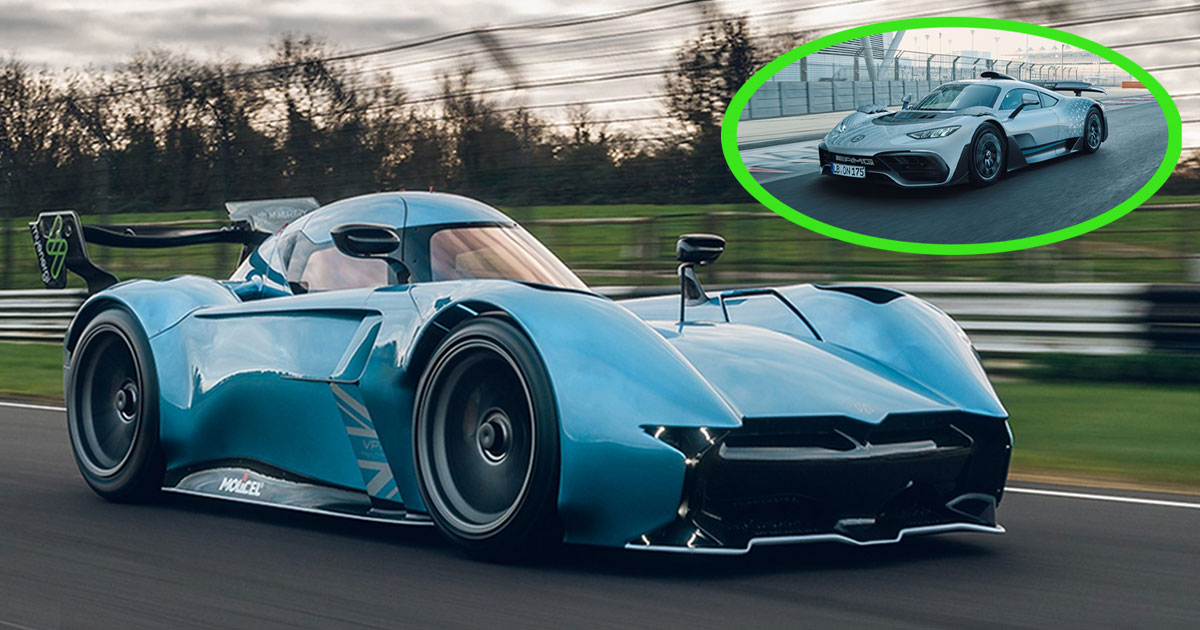Small EV Outruns the Mercedes-AMG One: A New Benchmark in Track Performance

Introduction: A New Contender in the EV Arena
The world of electric vehicles (EVs) continues to surprise and excite car enthusiasts, with new records being shattered and benchmarks being set. One of the most recent and thrilling developments comes from a diminutive yet powerful EV that has outpaced some of the most formidable machines on the planet, including the Mercedes-AMG One and a Deutsche Tourenwagen Masters (DTM) race car. This small EV has redefined what we can expect from electric performance on the track.
Breaking Records: The Hockenheim Triumph
In a stunning display of engineering and driving prowess, this small EV recently claimed the title of the fastest closed-wheel car around the legendary Hockenheimring. This track, known for its high-speed straights and technical corners, has seen countless high-performance vehicles push their limits. Yet, this little EV managed to outperform not only the AMG One but also a DTM race car, breaking the previous record set during a DTM qualifying session in 2020 by a remarkable 3.9 seconds.
Power and Performance: The Heart of the Beast
Despite its compact size, the engineers behind this EV have managed to fit an impressive 60-kWh battery into its lightweight frame. The car’s primary mission is clear: deliver neck-snapping acceleration and unparalleled track performance. The battery, which can be charged in under 20 minutes, provides enough power for 10 full-throttle laps of the Silverstone circuit.
At the core of this small EV lies a powertrain that delivers around 1,000 horsepower, all channeled to the rear wheels. This extraordinary power-to-weight ratio is achieved with a car that weighs less than 2,200 pounds, making it even lighter than an ND-generation Mazda MX-5 Miata. To put this into perspective, this EV packs roughly five times the horsepower of the Miata while maintaining a significantly lighter weight.
Dimensions and Design: Compact and Purpose-Built
Measuring just 135.8 inches in length, 62.2 inches in width, and a mere 40.1 inches in height, this EV makes even the compact Miata look like a giant. Its diminutive stature, combined with its lightweight construction, allows for an incredibly agile and responsive driving experience. The design is purpose-built for the track, featuring a single seat and racing slicks to maximize performance.
39.08! McMurtry fan car breaks Goodwood Hill RECORD! | Festival of Speed
The Record-Breaking Run: Max Chilton’s Mastery
The record-breaking lap at Hockenheim was performed on June 8, with former Formula 1 driver Max Chilton behind the wheel. Chilton’s expertise and experience in high-speed motorsport were instrumental in pushing this small EV to its limits. This was not Chilton’s first taste of success with this vehicle; he also set a lap record at the Goodwood Festival of Speed, completing the famous hill climb course in a blistering 39 seconds. This feat will undoubtedly be a tough record for future challengers to beat.
Comparative Performance: A Fair Assessment?
While it’s tempting to compare this EV’s performance directly to that of the Mercedes-AMG One and DTM race cars, it’s important to note some key differences. The EV in question is a purpose-built, track-only machine, designed specifically for maximum performance on the circuit. In contrast, the AMG One is essentially a road-legal Formula 1 car, and the DTM machine is built to the specifications of one of the most competitive touring car series in the world.
Despite these differences, the achievement remains impressive. The pint-sized electric car managed to set these records using only 75 percent of its available power and downforce, as the run was completed with a validation prototype. This suggests that there is even more potential to be unlocked from this remarkable vehicle.
Technological Marvel: Engineering Excellence
The engineering behind this small EV is nothing short of extraordinary. The combination of lightweight materials, advanced battery technology, and a powerful electric motor results in a car that not only competes with but outperforms some of the most advanced machines in the automotive world. The 60-kWh battery, capable of rapid charging and delivering consistent performance over multiple laps, is a testament to the advancements in EV technology.
The car’s aerodynamic design, with its wedge-shaped profile and strategically placed air intakes, enhances both speed and stability. The use of racing slicks and a finely tuned suspension system ensures that every ounce of power is translated into forward momentum, allowing the car to maintain incredible speeds through corners and on straights.
The Future of EV Racing: What This Means
The success of this small EV at Hockenheim and Goodwood signals a significant shift in the landscape of high-performance vehicles. It demonstrates that electric powertrains are not only viable but can surpass traditional internal combustion engines in certain aspects of performance. This breakthrough challenges long-held perceptions about the capabilities of electric vehicles and sets a new standard for future developments in the field.
As more manufacturers take note of these achievements, we can expect to see a growing number of high-performance EVs entering the market and making their mark on the track. The advancements in battery technology, power delivery, and aerodynamics showcased by this small EV will undoubtedly influence the design and engineering of future electric hypercars.
Conclusion: A New Era of Performance
The story of this small EV shattering records at Hockenheim and Goodwood is more than just a tale of speed and power. It represents a paradigm shift in the world of automotive performance, where electric vehicles are no longer seen as the underdogs but as legitimate contenders capable of setting new benchmarks.
For car enthusiasts and adrenaline junkies, this achievement is both exciting and inspiring. It opens the door to a future where electric hypercars can deliver the same, if not greater, thrills as their gasoline-powered counterparts. As we look forward to more innovations and record-breaking performances, one thing is clear: the era of electric performance is here, and it’s only just beginning.

